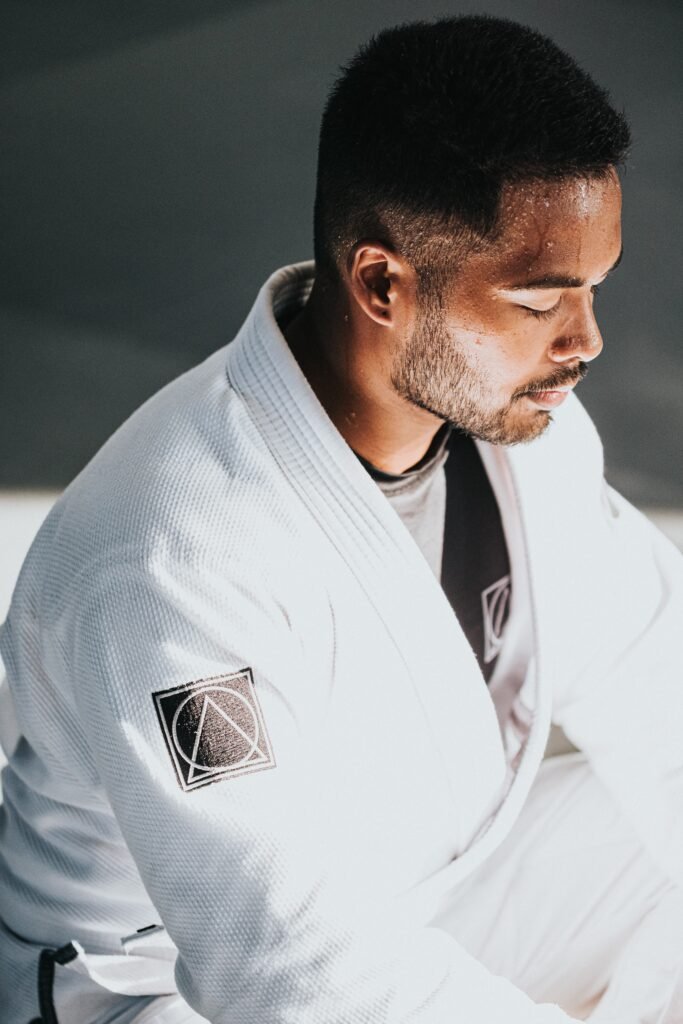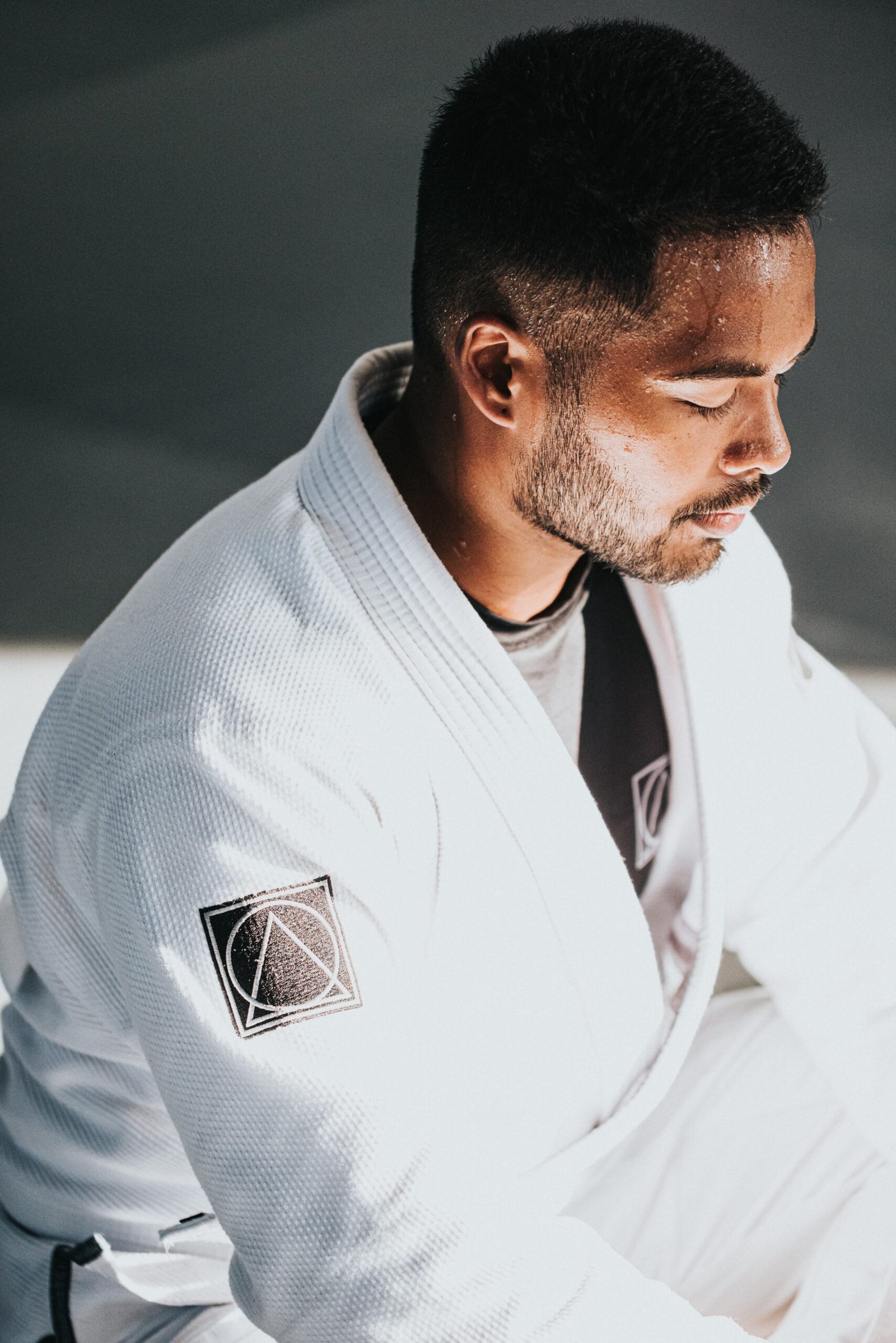Are you interested in learning about the fascinating world of martial arts? Look no further! USHRK Kumdo & Kendo offers modern Korean style martial arts that can help you enhance your physical and mental strength, develop self-defense skills, and boost your confidence. Whether you are a beginner or an experienced practitioner, our Martial Arts program is designed to cater to all skill levels. Join us today and discover the countless benefits that martial arts can bring to your life.

Definition of Martial Arts
Origins of Martial Arts
Martial arts have a rich history that dates back thousands of years. The origins of martial arts can be traced back to ancient civilizations such as Egypt, Mesopotamia, and China. These ancient civilizations developed combat techniques and fighting styles as a means of self-defense and warfare. Over time, these techniques evolved and were refined, leading to the development of various types of martial arts.
Meaning of Martial Arts
Martial arts can be defined as a system of combat techniques and physical exercises that are practiced for various purposes, including self-defense, physical fitness, mental discipline, and personal development. The word "martial" derives from the Latin word "mars," which refers to the Roman god of war. Martial arts encompass a wide range of fighting styles and techniques that have been developed and practiced by cultures around the world.
Types of Martial Arts
There are numerous types of martial arts, each with its own unique characteristics, techniques, and origins. Some of the most popular types of martial arts include Karate, Taekwondo, Judo, Kung Fu, Muay Thai, Brazilian Jiu-Jitsu, and Boxing. These martial arts vary in terms of their focus on striking, grappling, throws, ground fighting, and weapons training. Each type of martial art offers a distinct approach to combat, emphasizing different aspects of both offensive and defensive techniques.
History of Martial Arts
Ancient Martial Arts
The origins of martial arts can be traced back to ancient civilizations, where combat techniques were essential for survival and warfare. Ancient Egyptian martial arts, for example, focused on hand-to-hand combat and weapon-based techniques. In ancient China, martial arts such as Kung Fu and Tai Chi were developed as a means of self-defense and improving health. Similarly, in ancient Greece, combat skills were taught for both civilian and military purposes, with wrestling and boxing being common disciplines.
Development and Evolution
As civilizations grew and interacted with one another, martial arts techniques began to spread and evolve. This led to the development of various regional fighting styles that incorporated elements from different cultures. Over time, martial arts became not only a means of combat but also a way of life, encompassing spiritual and philosophical aspects. Different styles emerged, each characterized by its own unique set of techniques and principles.
Spread of Martial Arts Globally
The spread of martial arts across the globe can be attributed to various factors, such as trade, migration, and cultural exchanges. During the Middle Ages, traveling monks, merchants, and warriors helped to disseminate martial arts knowledge across different regions. As a result, martial arts spread throughout Asia, Europe, and the Americas, with each culture putting its own spin on the techniques and adapting them to suit their own needs and preferences. Today, martial arts have gained popularity worldwide and are practiced by millions of people for various reasons.
Benefits of Practicing Martial Arts
Physical Fitness
One of the most notable benefits of practicing martial arts is improved physical fitness. Martial arts training involves a combination of cardiovascular exercise, strength training, and flexibility exercises. Through regular practice, individuals can increase their stamina, develop greater muscle tone, improve coordination and balance, and enhance overall physical endurance.
Mental Discipline
Martial arts go beyond physical training and also emphasize mental discipline. The practice of martial arts requires focus, concentration, and discipline, all of which contribute to the development of a strong mind. By learning and executing complex techniques, martial artists enhance their mental acuity and sharpen their problem-solving abilities. The mental discipline fostered through martial arts training can also be applied to other facets of life, such as work or academics.
Self-Defense Skills
One of the primary reasons people engage in martial arts is to learn self-defense skills. Martial arts training equips individuals with the knowledge and techniques necessary to protect themselves in threatening situations. By learning effective striking and grappling techniques, individuals can gain the confidence and ability to defend themselves against potential attackers. Moreover, martial arts training also instills a sense of situational awareness and the ability to assess and react to dangerous situations.
Confidence and Self-Esteem
Practicing martial arts can have a profound impact on an individual's self-confidence and self-esteem. As individuals progress in their training and master new techniques, they gain a sense of accomplishment and self-assurance. The discipline, focus, and dedication required in martial arts contribute to a heightened sense of self-worth and belief in one's abilities. This newfound confidence can carry over into other areas of life, leading to improved performance in academics, careers, and personal relationships.
Stress Relief and Improved Focus
Martial arts training provides an avenue for stress relief and improved focus. Engaging in physical exercise releases endorphins, which act as natural stress relievers and promote a sense of well-being. The intense physical and mental demands of martial arts training help individuals channel their energy and focus their minds, allowing them to escape from the pressures and anxieties of daily life. Through disciplined training, practitioners develop greater mental clarity, heightened concentration, and improved ability to handle stress.
Different Styles of Martial Arts
Traditional Martial Arts
Traditional martial arts refer to styles, techniques, and philosophies that have been passed down through generations, often rooted in ancient cultures and traditions. These martial arts emphasize strict discipline, honor, and respect for the traditions and values associated with each style. Examples of traditional martial arts include Japanese Karate, Chinese Kung Fu, and Korean Taekwondo. Traditional martial arts focus on both physical techniques and the mental and spiritual development of the practitioner.
Modern Martial Arts
Modern martial arts encompass more contemporary styles that have emerged in recent years. These styles often draw inspiration from traditional martial arts but also incorporate new techniques and concepts. Modern martial arts, such as Krav Maga and Mixed Martial Arts (MMA), are often more practical and street-oriented, focusing on real-world self-defense scenarios. These martial arts styles prioritize effectiveness and adaptability, and they are often used in military and law enforcement training.

Popular Martial Arts Techniques
Kicks
Kicks are a fundamental aspect of many martial arts styles. Different martial arts emphasize different types of kicks, whether it be high kicks, spinning kicks, or low kicks. Kicks are used both offensively, to strike opponents, and defensively, to create distance or block incoming attacks. Properly executed kicks require balance, flexibility, and precision.
Punches
Punching techniques are another essential component of martial arts. Punches can be executed with different parts of the hand, such as the fist or the open hand, and can be delivered with varying levels of force and speed. Proper punching techniques involve generating power from the legs and transferring it through proper body mechanics. Punches can be aimed at various targets, including the head, body, or limbs of an opponent.
Throws and Takedowns
Throws and takedowns are techniques employed in martial arts that involve off-balancing an opponent and bringing them to the ground. These techniques require timing, leverage, and understanding of an opponent's body mechanics. Throws and takedowns can be used for both defensive and offensive purposes, allowing martial artists to control and neutralize their opponents in close-quarters combat.
Joint Locks and Chokes
Joint locks and chokes involve controlling an opponent's joints or restricting their airflow to force them into submission. These techniques are typically used in grappling martial arts, such as Brazilian Jiu-Jitsu and Judo. Joint locks can put pressure on an opponent's joints, causing pain or injury if they do not submit. Chokes, on the other hand, restrict an opponent's blood flow or airflow, leading to a loss of consciousness if not released.
Weapons Training
Some martial arts focus on training with weapons, such as swords, staffs, or nunchaku. Weapons training can enhance coordination, timing, and concentration. It also requires mastery of specific techniques unique to each weapon. By incorporating weapons into martial arts training, practitioners develop skills that offer both practical self-defense techniques and a deeper understanding of combat principles.
Training and Ranking Systems
Belt Ranking System
Many martial arts employ a belt ranking system to signify a practitioner's progression and skill level. Belts of different colors, starting from white and progressing to black, symbolize increasing levels of proficiency. Advancing through the belt ranking system requires the demonstration of specific techniques, knowledge, and understanding of martial arts principles. Belt rankings not only serve as a measure of progress but also provide motivation and a sense of accomplishment for practitioners.
Forms and Kata
Forms, also commonly known as kata, are prearranged sequences of movements that simulate combat scenarios. Practitioners perform these sequences with precision, incorporating various techniques, strikes, and stances. Forms serve as a means of practicing techniques in a controlled manner, helping martial artists refine their movements, develop muscle memory, and improve overall technique and fluidity.
Sparring and Competitive Events
Sparring and competitive events are an integral part of martial arts training. Sparring allows practitioners to test their skills in a controlled environment against a resisting opponent. It helps develop timing, strategy, and the ability to react quickly to an opponent's actions. Competitive events, such as tournaments or matches, provide opportunities for martial artists to showcase their skills in a competitive setting and learn from other practitioners.

Famous Martial Artists and Legends
Bruce Lee
Bruce Lee is one of the most iconic figures in martial arts history. Hailing from Hong Kong, Lee revolutionized martial arts films and popularized martial arts worldwide. He developed his own martial arts philosophy called Jeet Kune Do, which emphasized fluidity, adaptability, and simplicity. Bruce Lee's contributions to martial arts and his charismatic on-screen presence made him a legend in the martial arts community.
Jet Li
Jet Li, a Chinese martial artist and actor, has made significant contributions to the world of martial arts both on and off the screen. Known for his dazzling acrobatics and lightning-fast kicks, Li has starred in numerous martial arts films, showcasing his skills and technique. Off-screen, Jet Li has been actively involved in promoting martial arts and its benefits to both physical and mental health.
Jackie Chan
Jackie Chan is a martial artist, actor, and filmmaker who has had an immense impact on martial arts cinema. His unique blend of martial arts, acrobatics, and comedic timing has earned him worldwide recognition and a massive fan base. Known for performing his own stunts, Jackie Chan's dedication and innovative approach to action cinema have solidified his status as one of the most respected figures in martial arts entertainment.
Miyamoto Musashi
Miyamoto Musashi, a legendary swordsman from Japan, is considered one of the greatest martial artists in history. Known for his exceptional swordsmanship and strategic prowess, Musashi wrote the renowned book "The Book of Five Rings," which serves as a guide to martial arts philosophy, strategy, and personal development. Miyamoto Musashi's teachings and insights continue to influence martial artists to this day.
Martial Arts in Popular Culture
Movies and TV Shows
Martial arts have had a profound impact on popular culture, especially in the realm of film and television. From classic martial arts films like "Enter the Dragon" and "Crouching Tiger, Hidden Dragon" to modern action-packed franchises like "The Matrix" and "John Wick," martial arts have captivated audiences with their dynamic fight scenes, intricate choreography, and larger-than-life characters.
Video Games
Martial arts have also found their way into the realm of video games. Various martial arts styles and techniques have been incorporated into fighting games such as "Tekken," "Street Fighter," and "Mortal Kombat." These games allow players to experience the thrill of martial arts combat and test their skills against opponents, both offline and online.
Books and Comics
The influence of martial arts extends to literature and comic books, with many stories featuring martial arts themes and characters. Comics like Marvel's "Iron Fist" and manga series like "Dragon Ball" have gained significant popularity, showcasing martial arts techniques through their characters. There are also numerous books written on the subject of martial arts, ranging from instructional guides to philosophical treatises on combat and personal growth.
Martial Arts in Olympics
Inclusion of Martial Arts
The Olympic Games have recognized the significance and global appeal of martial arts and have included certain martial arts disciplines as official Olympic events. Martial arts were first introduced to the Olympics in 1964 with Judo becoming an official sport. Since then, Taekwondo and boxing have also been included, showcasing the diversity and athleticism of martial arts on the world stage.
Popular Olympic Martial Arts
Judo, Taekwondo, and boxing are among the most popular martial arts disciplines featured in the Olympics. Judo, a Japanese martial art, emphasizes throws and grappling techniques. Taekwondo, originating from Korea, focuses on high kicks and fast-paced movements. Boxing, a combat sport renowned for its punches and footwork, has a long-standing history in the Olympics.
Impact on the Martial Arts Community
The inclusion of martial arts in the Olympics has had a significant impact on the martial arts community. It has raised the profile of these disciplines, further promoting their accessibility and legitimacy as sports. The Olympics provide a platform for martial artists from various countries to compete and showcase their skills. Additionally, the exposure garnered from Olympic competitions has led to increased interest and participation in martial arts worldwide.
Tips for Beginners in Martial Arts
Choosing the Right Martial Art
When starting your martial arts journey, it's essential to consider which martial art aligns with your interests, goals, and physical capabilities. Research different martial arts styles and try out introductory classes to get a feel for each discipline. Consider factors such as the emphasis on striking, grappling, self-defense, or cultural aspects to determine what resonates with you.
Finding a Good Instructor
Having a knowledgeable and experienced instructor is crucial in martial arts training. Look for instructors who are certified, have a good reputation, and prioritize safety during training. A skilled instructor can guide you through proper techniques, help you progress, and provide valuable insights into the martial art you choose to pursue.
Setting Realistic Goals
Setting realistic goals is important to stay motivated and enjoy your martial arts journey. Start with small, achievable goals and gradually work your way up. Celebrate every milestone you achieve, whether it's a new technique learned or a belt promotion. By setting realistic goals, you can track your progress and ensure a rewarding experience in martial arts.
Staying Consistent and Committed
Consistency and commitment are key to progress in martial arts. Regular training is necessary to develop skills, build strength, and refine techniques. Make a schedule and stick to it, even on days when motivation is lacking. It's essential to push through difficulties and setbacks, as perseverance is crucial in achieving mastery in martial arts.
In conclusion, martial arts encompass a diverse range of combat techniques, philosophies, and traditions that have evolved over centuries. From its ancient origins to its spread across the globe, martial arts have attracted practitioners for their physical fitness benefits, mental discipline, and self-defense skills. Whether you choose to practice a traditional martial art or a modern style, martial arts offer a rewarding journey of personal growth, increased confidence, and improved well-being. With famous martial artists and legends leaving a lasting cultural and cinematic impact, the influence of martial arts can be seen in various forms of popular culture. Moreover, the inclusion of martial arts in the Olympics further highlights the global recognition and appeal of these disciplines. For beginners embarking on their martial arts journey, it is essential to choose the right style, find a knowledgeable instructor, set realistic goals, and remain committed to consistent training. By immersing yourself in the world of martial arts, you can experience its physical, mental, and spiritual benefits firsthand.














